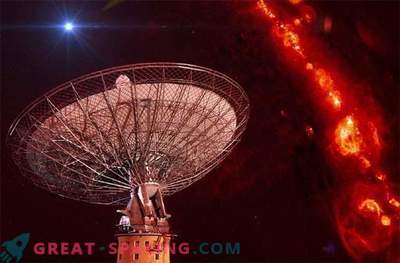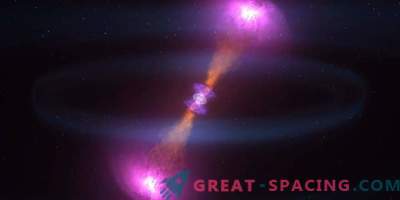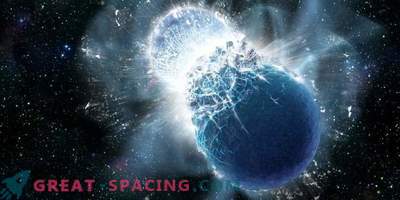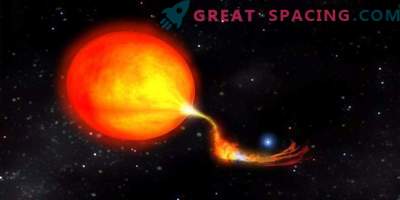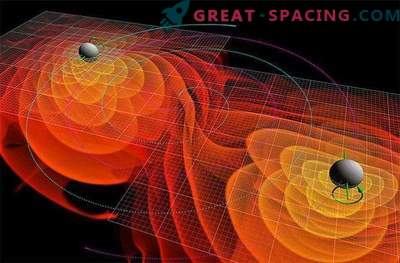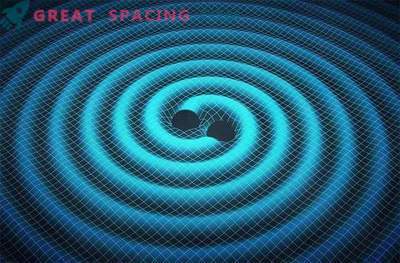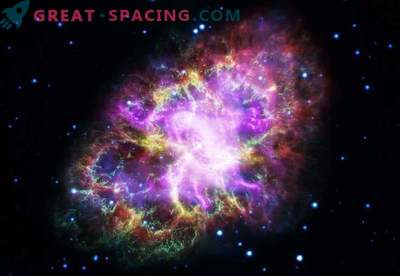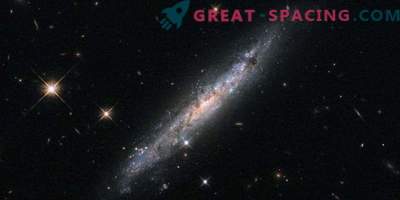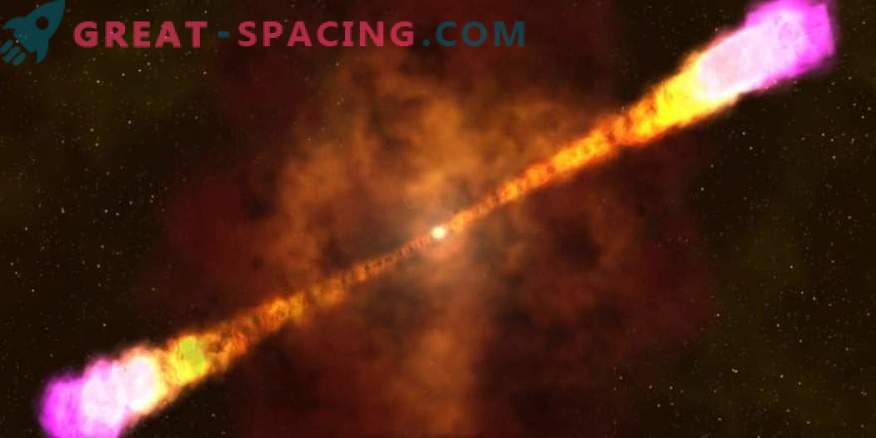
Artistic vision of gamma-ray burst. A jet of fast-moving material is pushed out through the spherical shell of the ejected material from the initial explosion of a massive star and its collapse into a black hole.
Astronomers using VLA (Ultra Large Antenna Grid) data for the first time managed to find the afterglow of a powerful gamma-ray burst that did not cause detectable gamma radiation. The unprecedented discovery of orphan gamma radiation (GRB) provides a better understanding of the consequences of such high-energy events.
GRBs release gamma rays in narrowly focused beams. In the specific case, it is believed that the rays were diverted from the Earth, so the gamma telescopes could not fix the event. Scientists have noticed only radio trails after the explosion. VLA search was conducted at the end of 2017. It was surprising that the object that flashed in the 1994 VLASS observations did not appear on the new images. Researchers began to search for additional data since 1975 and found the object only in 1993.
Then the object flashed on several VLA images from 1993-2015. He was called FIRST J1419 + 3940, and it is located on the outskirts of the galaxy with a distance of more than 280 million light years from Earth.

FIRST J1419 + 3940 radio image series from 1993-2017, showing gradual extinction The strength of the radio beam from J1419 + 3940 and the fact of slow evolution confirms the idea that this is the afterglow of GRB. Scientists believe that the explosion and gamma rays were to be fixed by telescopes in 1992 and 1993. But a long and thorough search did not lead to a convincing candidate. There are other explanations for the event, but the GBR seems the most likely.
A particular GBR looks fascinating not only because it is the first “orphan”, but also the most ancient localized GRB, able to provide a lot of valuable information about the afterglow.
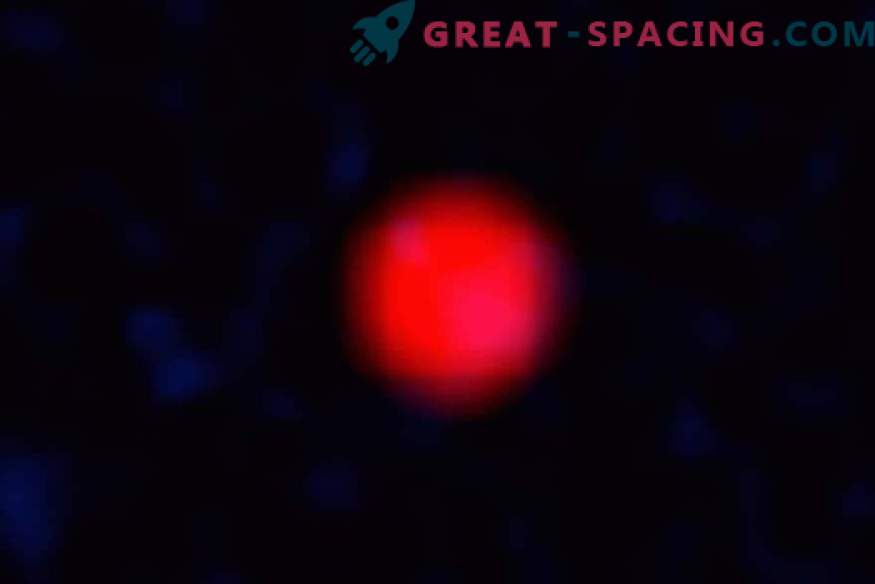
Animation of images from 1993-2017 shows that radio emission from a suspicious “orphan” gamma-ray burst disappears with time
VLASS is the largest observational project in VLA history. Beginning in 2017, the review will use 5,500 hours of observations over 7 years. The survey will perform three complete sky scans, covering about 80%. The original footage of the first release is now available to astronomers.
The VLASS project follows two earlier VLA research projects: NVSS - 1993 to 1996 and FIRST, which explored a smaller part of the sky in more detail in 1993-2002. From 2001 to 2012 VLA has undergone a major update, due to which its sensitivity and ability to display weak objects has increased.
